Includes per person per night:
- Overnight accommodation
- Breakfast buffet
- Afternoon coffee with cake
- 4-course gourmet dinner
4.61930089412217 of 5 Stars
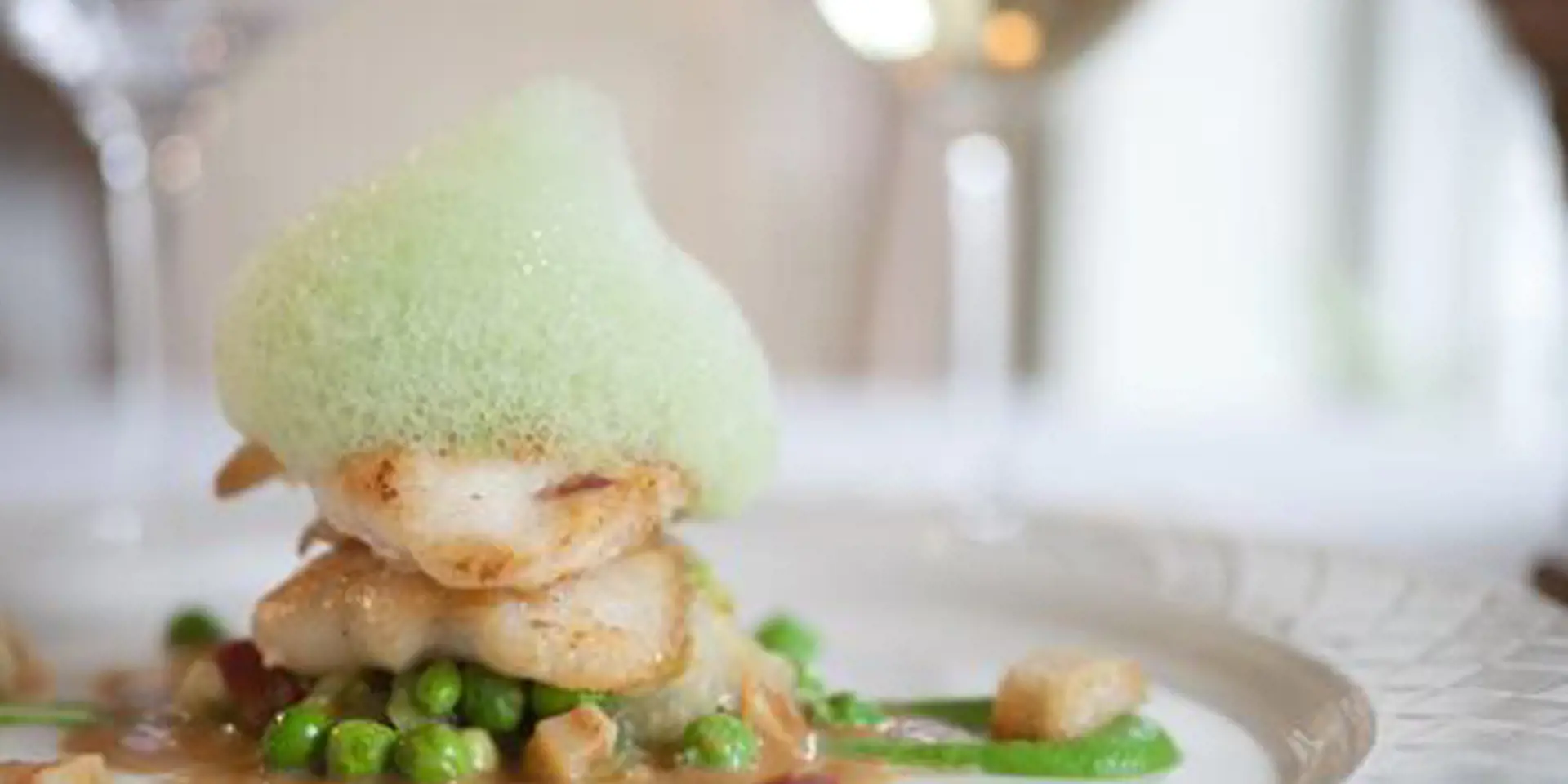
Includes per person per night:
Click the "See calendar and prices" button to choose dates and see the room selection.
See calendar and prices: Gourmet StayTyrstrup Vestervej 6, 6070 Christiansfeld
Show map
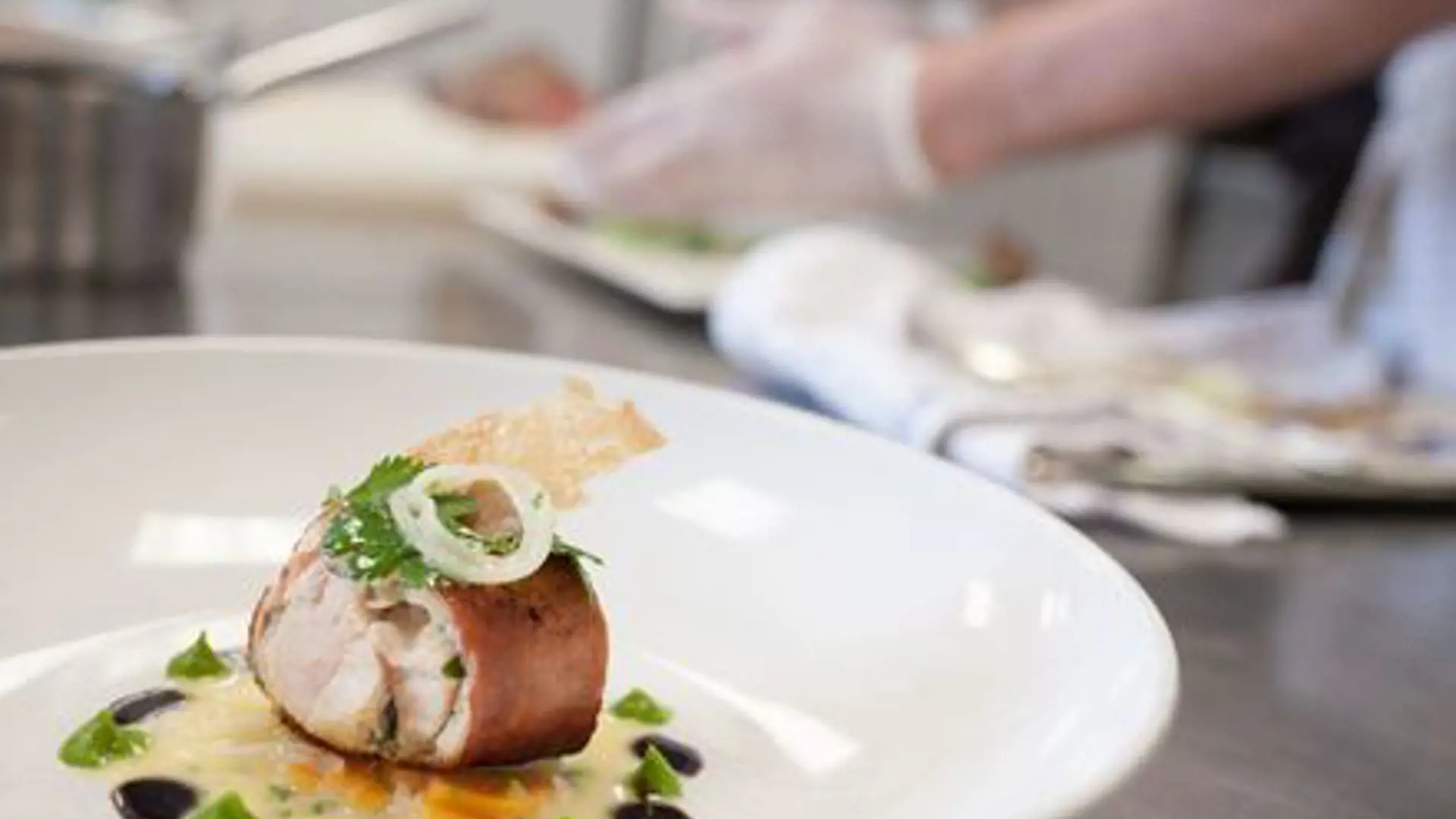
Minimum 3 days / 2 nights
Includes per person per night:
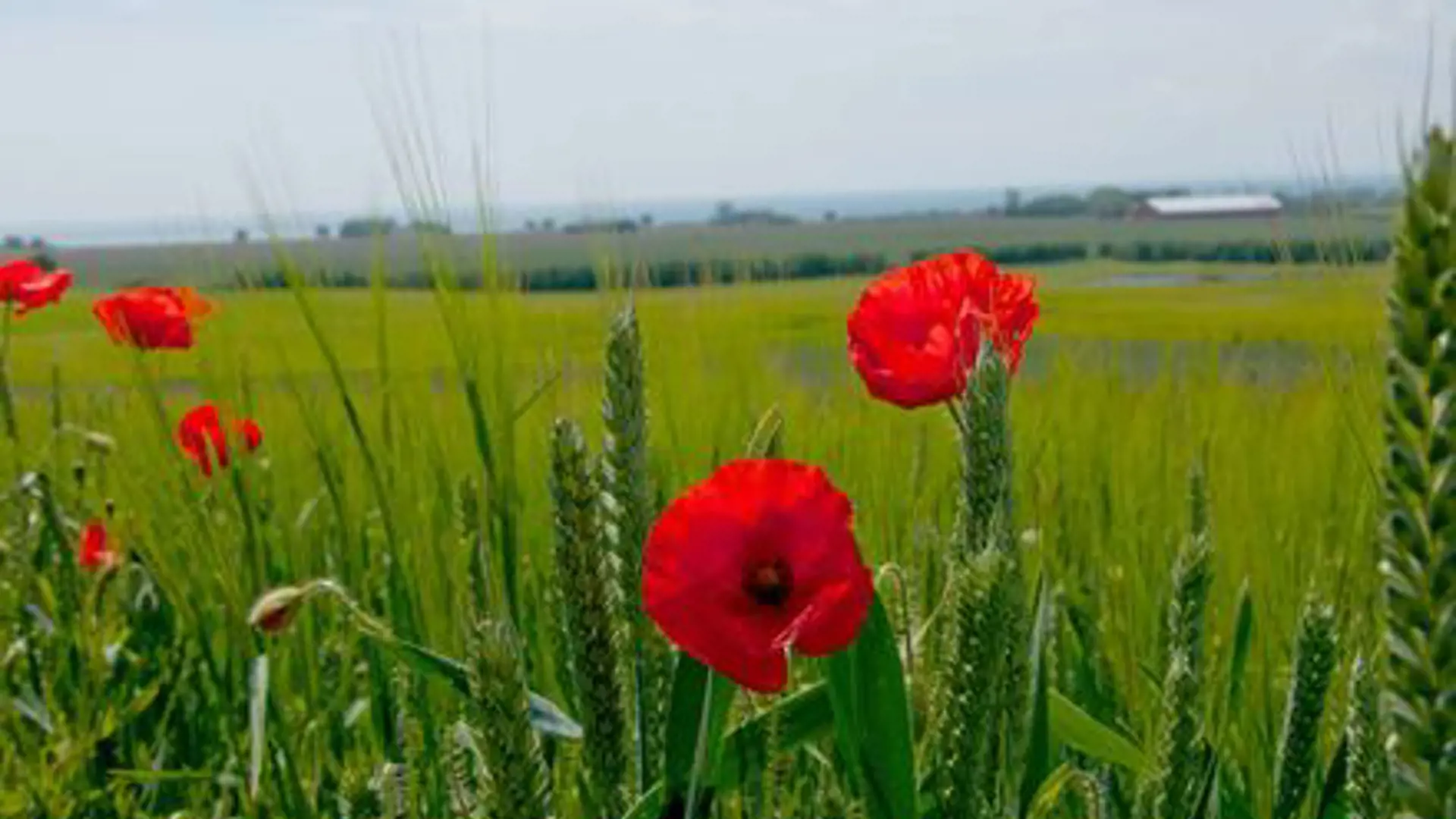
Minimum 3 days/2 nights
Includes per person per night:
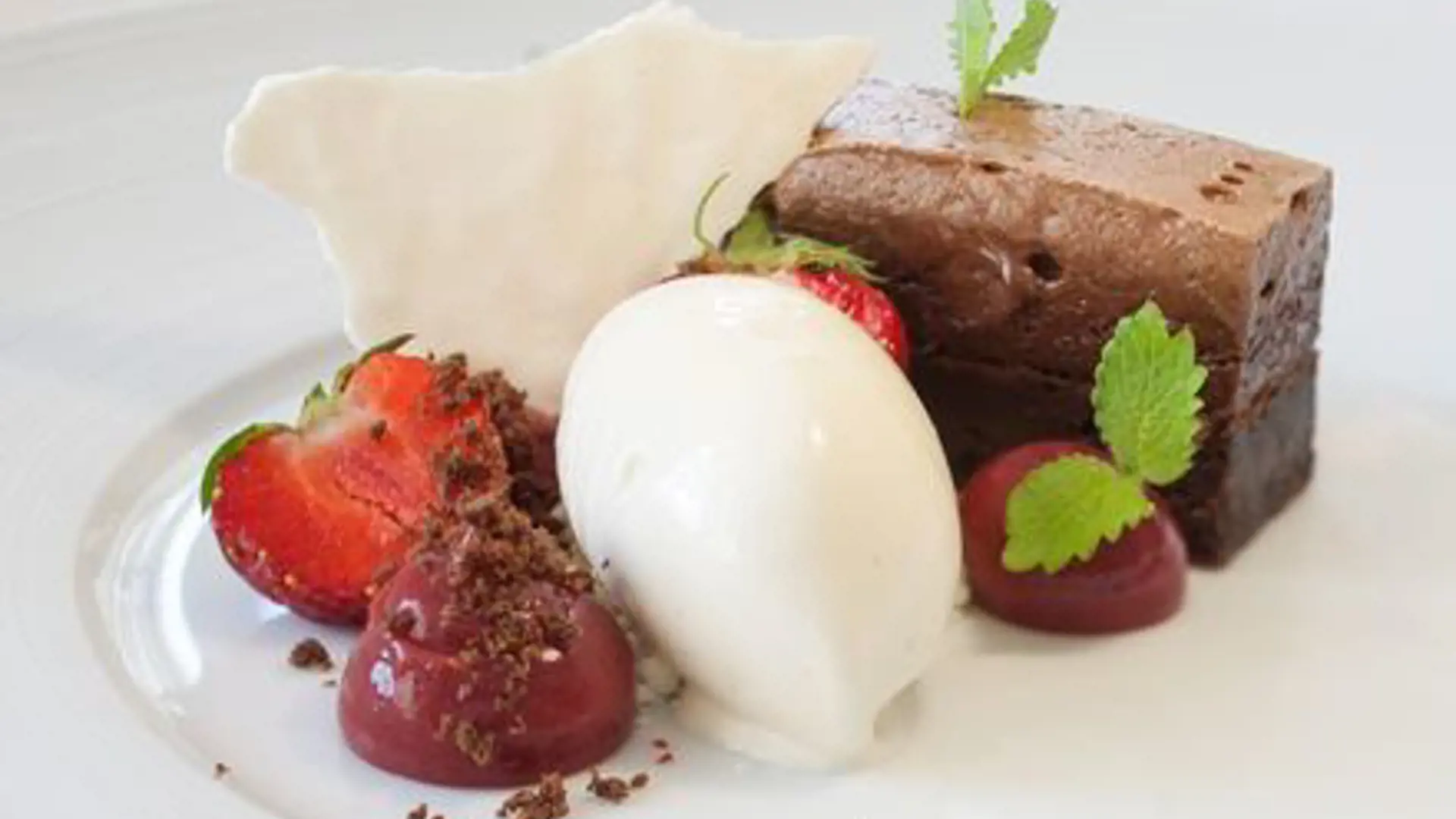
Includes per person per night:
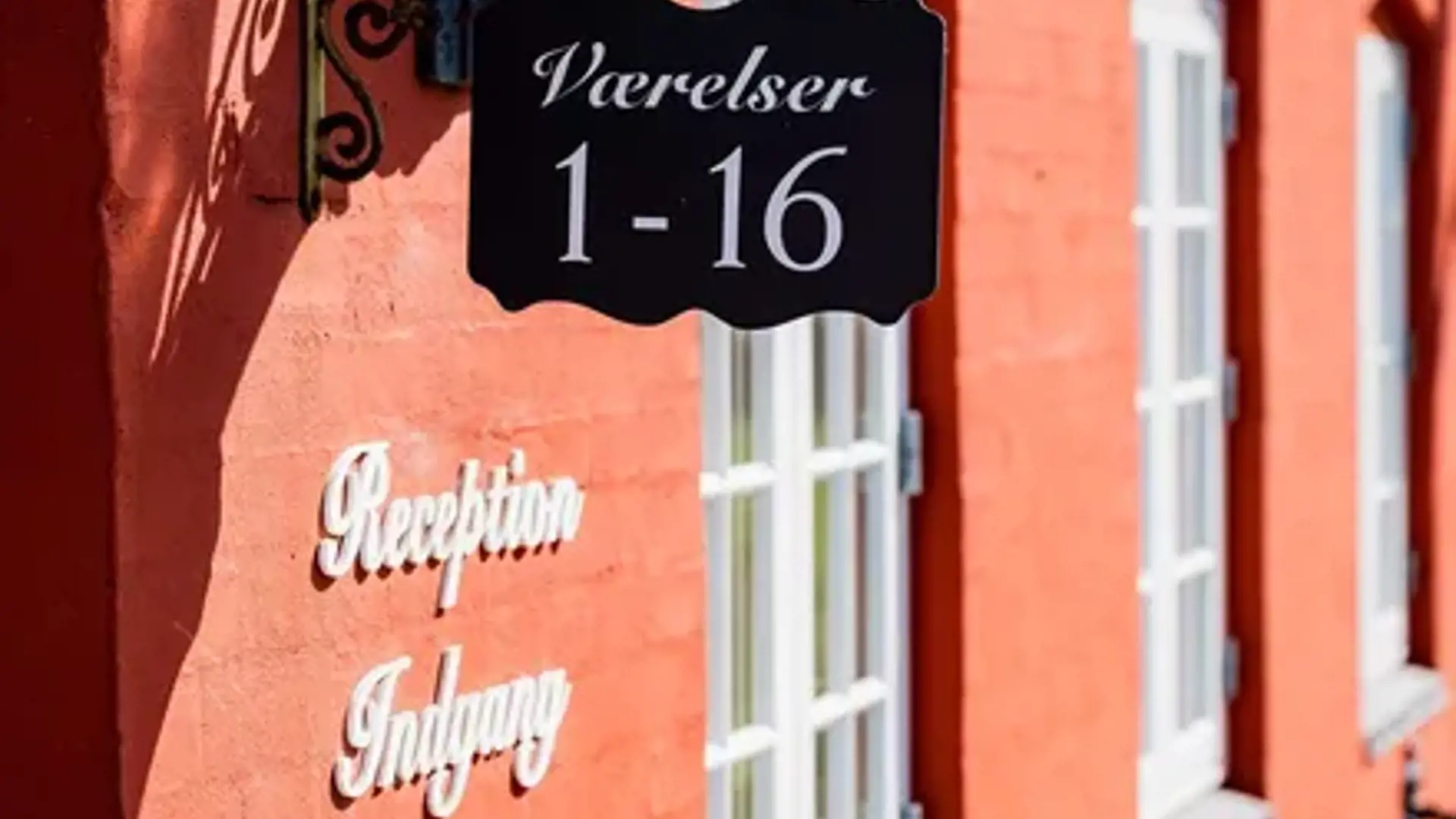
Includes per person per night:

Arrival 01.06.25 - 31.07.25
Includes per person:
2 x Overnight accommodation
2 x 3-Course menu
2 x Aperitif
2 x Small greeting from the kitchen
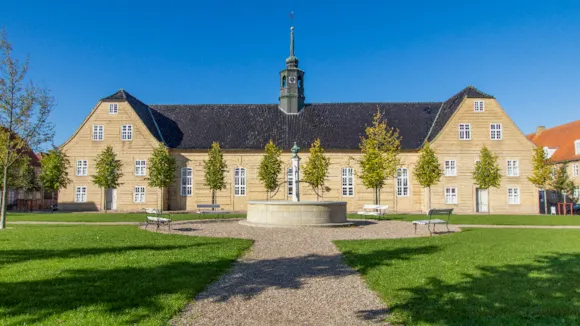
0.91 km
The Moravian Church also called "the floor house"- has Denmark’s largest church interior without supporting pillars. The church can accommodate around 1000 people.
It was consecrated on the 13th of August in 1777, and 20 years later the two side wings were added. Like the other houses in Christiansfeld, the church is a protected building.
The church is characterized by simplicity. The large room is completely white without an altar, font or wall decoration. Nor are there a pulpit, but just a liturgy table where the minister can lead the church service. The lighting in the church consists of the old handmade chandeliers from 1776. The wooden floor is sanded and untreated.
In the church you'll find the great Marcussen-organ from 1865 containing 20 stops.
All are welcome to participate in the church services and ceremonies.
For a tour of Christiansfeld, contact Museum Kolding in Søstrehuset, tel. 76 33 81 00.
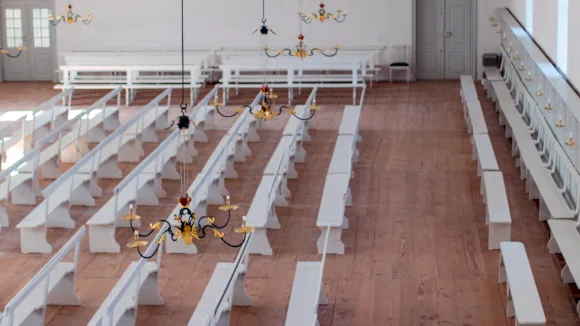
0.91 km
Visit the world heritage in Christiansfeld
The town was founded in 1773 by German Moravians from Herrnhut by the orders of King Christian VII, therefor the name Christiansfeld. The Herrnhuts were very skilled craftsmen and tradesmen. They created a town with coherent architecture, a consistent use of certain materials and colours, along with their sense for details originating from their strong Christian faith. This faith is the underlying basis for both their life, way of thinking and their town planning, placing God and the church at the centre of everything.
Christiansfeld has been carefully restored and its special architecture, materials and colours makes it something very unique.
At Christmas you can enjoy the beautiful Herrnhut-stars that light up the streets around the Praetorian-square and the Church-place.
The Moravians are an evangelical-Lutheran independent congregation with the same confessional basis as the Danish National Church. The Moravians are also called the Herrnhuts and can be dated back to 1415. The Moravians are leaded by the Elders that can be compared to the council of the National Church.
For further information about Christiansfeld and the Moravians - come visit this special city which was rewarded the UNESCO World heritage at the 4th of July 2015.
A walk in Christiansfeld is a walk into world history, with something new to investigate on every corner of the town.
Read more about Christiansfeld and the world heritage
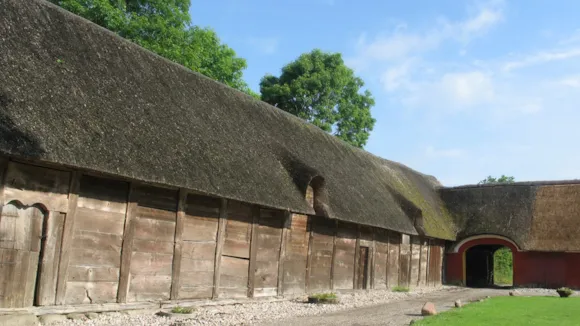
0.86 km
The garden is closed due to renovation until the end of summer 2025.
The protected Oak Barn is told to been build in 1668. It's 36 m. long and therefore the biggest Oak Barn in Denmark, which still stands at its original place.
It is build on a foundation of granite boulder and the walls consist of timber with horizontal planks between vertical uprights. The Oak Barn is a half-timbered house built in only wood without the use of nails and screws.
The Oak Barn is placed 2 km. southwest of Christiansfeld.
Combine a visit at the Oak Barn with a visit to the beautiful garden "Christinero" only 700 m. from the Oak Barn.
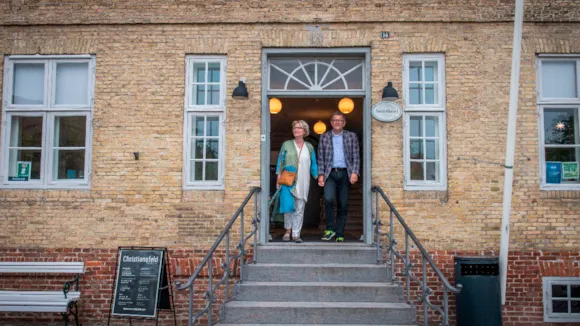
0.91 km
When you visit Christiansfeld, we recommend that you start at Museum Kolding in Søstrehuset, Nørregade 14.
In the Museum shop, you buy admission to the entire Søstrehuset, after which you can freely walk around the entire house and see where the Sisters lived. Pay particular attention to the balusters. Søstrehuset has several exhibitions and information.
Explore the museum shop, where you can find brochures for the area.
You can book a place on guided tours with the museum host.
In Søstrehuset, by Museum Kolding, you can get information about the UNESCO town of Christiansfeld and the Brethren, see exhibitions or take a guided historical city walk.
Museum Kolding holds lectures and events as well as children's and family activities during holidays and public holidays - for further information see www.museumkolding.dk
Exhibitions in Søstrehuset
In Søstrehuset, Museum Kolding has changing special exhibitions - for more information contact Museum Kolding or read more at www.museumkolding.dk
Find Museum Kolding's exhibition rooms on the ground floor of Søstrehuset, Nørregade 14, 6070 Christiansfeld.
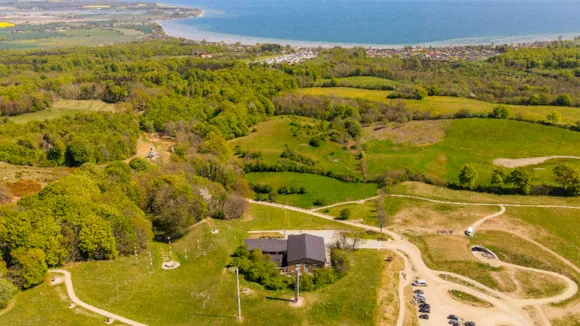
9.02 km
With its 113 meters above sea level, Skamlingsbanken has a beautiful view, Skamlingsbanken is the highest point in Southern and Southern Jutland.
Skamlingsbanken forms a beautiful natural area, from which there is a magnificent view over the entire area between Kolding and Christiansfeld. There is a view over the Little Belt to Funen and to the west far into Southern Jutland. The landscape appears lush with fields, beech forests, live fences along roads and field divides.
In the area, there are plenty of opportunities for walks that go through the beautiful landscape - for example, take the trip all the way down to Binderup and Grønninghoved Strand and back again. A brisk trot of around five kilometres.
Skamlingsbanken is known for the folk festivals that were held in the years 1843-59 in support of the Danish cause in Southern Jutland.
At Højskamlingen stands a 16 meter high support made of 25 granite blocks in memory of the champions of the Danish cause in Schleswig. The buttress was erected in 1863, blown up by the Prussians in 1864 and erected again in 1866. The re-erection was possible because people in the area had collected and hidden the stones. Near the support are six other memorial supports and a pulpit of large boulders. Around the podium are five groups of trees, symbolizing the inseparability of the five Nordic countries. The trees are: beech (Denmark), birch (Sweden), spruce (Norway), pine (Finland) and rowan (Iceland).
After the liberation in 1945, a memorial grove was set up for the fallen from the South Jutland resistance movement.
Today, Skamlingsbanken is a popular excursion destination. At Skamlingsbanken there is accommodation and parking, a visitor center with a cafe that provides information about Skamlingsbanken's history and a restaurant.
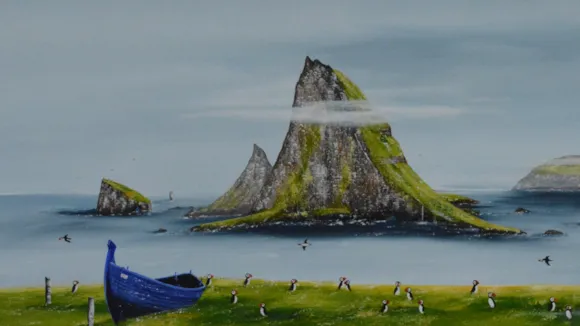
7.83 km
Gallery Mørkøre is located in a small village in Ødis bramdrup. The Gallery is full off Faroe inspiring paintings. The paintings are made after memories from 3 years living in the Faroe island. The small houses in many colors is everywhere in the landscape.
The new paintings called the detachment, show the primitive life that must be lived after a rock has torn loose. Whether people succeeded without the standard of our time is unknown.
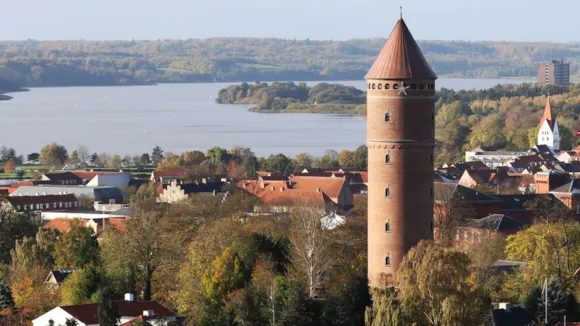
11.56 km
The water tower was build in 1924 and worked toward plentiful and clean water-source for the town population that only grew after the reunion. The tower was first put to use on first of January 1925. The tower was made of concrete and wrapped with red brick.
The tower added with its height a sight attraction in Haderslev. An exiting viewpoint can be reached from the top of the tower. There was public access to the tower from 1924-1966. The view of the town rooftops, green land and blue water is beautiful.
Since then a second 'white tower' was added to Haderslev at christiansfeldvej in 1991 and the red water tower was no longer put to use as a water tower.
The water tower has two functions today: one is to hold high the advent star in the last couple of weeks of the year. The second is to function as a symbol for the annual music festival 'Kløften festival', on the first day of summer break in June.
Every year, Santa will light the Christmas Star on The Red Water Tower in Haderslev. There will be bags of sweets for children and mulled wine, juice and apple turnovers on sale. Free admission to the top of the tower. TheClowns, a local group, will add an extra special touch to this cosy afternoon event. The group will play their own music inside the tower. TheClowns hope that their concert will become part of this established Christmas tradition. Some group members live close to the water tower. At this time of the year, they look forward to the lighting of the star, which creates a unique atmosphere in Kløften Park throughout the Christmas period. TheClowns’ lyrical music evokes an atmosphere that is perfect for small, intimate concerts like those we can hold in the water tower. The group likes to experiment with all sorts of venues. The group loves to play in churches and believes that the Red Water Tower has something really special to offer as a concert venue. This is the third time TheClowns plays inside the water tower. They are looking forward to welcoming a large audience to shining stars, evocative music and lovely Christmas aromas – of mulled wine and apple turnovers.

12.27 km
The Cathedral is first and foremost the church of the parish; the framework that winds itself around human life in celebration and joy, pain and mourning. Then, it is the entire city's church; anyone can come here whether they are a member of the parish or not. Finally, the Cathedral is also the church of the entire diocese; the centre of all major events in the diocese.
The Cathedral is not a museum. Like all other churches it is in living use. But is holds a fascinating and eventful history, as well as fine artwork and fixtures.
Queen Margrethe II designed 4 antependiums (altar cloths) as well as 4 matching chasubles. The chasubles can be seen up close in glass cases beneath the choir. They contain central Christian symbols, which shows how extensive the Queen's knowledge is and how anchored she is in the Christian faith.
Everyone is welcome to visit the Cathedral, either to have a quiet moment for thought or to see the many interesting things the Cathedral has to offer.
Tours can be arranged during opening hours. Contact the vergers at +45 73 52 36 45 best between 10am-3pm, or at email: domkirketjener@hado.dk. Photography is allowed in the church for private use, but is not allowed during church functions.
Memorial Chapel for the Schlesinger Regiment. Some Fridays the Schlesinger Music Corps (SMUK) marches to the Cathedral to turn a leaf in their memorial book over fallen soldiers from their regiment. It is a festive feature and should be experienced if you are close by.
Concerts: During the summer there are organ-concerts every Friday afternoon as well as frequent evening concerts.
The Cathedral is closed for visitors during church functions in the opening hours.
The Cathedral is also closed for visitors around the holidays (Maundy Thursday, Good Friday, Easter Sunday, Great Prayer Day, Christ's Ascension, Pentecost, Whit Monday, First day of Christmas and Second day of Christmas).
Until June 2020 there is limited access for the walking impaired, as you need to climb a few steps to enter the church, and a ramp is not yet available.
Haderslev Cathedral is also the starting point for the Camino Haderslev Næs trail that winds through Haderslev and its surrounding areas in 9 stages.
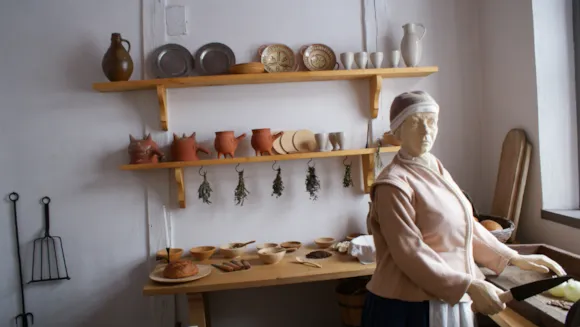
12.32 km
Von Oberberg's House is a lovely and restored house built in 1580. In the house you will find tales from the city's history, from the beginning of the middle ages to modern time. Von Oberberg's House was built by the architect Hercules von Oberberg, the architect behind Hansborg Castle, and famous for being the architect behind the Castle Church at Sonderborg Castle and the large tower at Koldinghus. A special attraction in the house are the remains of some very rare murals from ca. 1680, showing antique heroes on horseback.
NOTE: There is a new exhibition in Von Oberberg House from 16 June to 21 September 2025. Look forward to experiencing Kamma Svensson's art. She was a true pioneer who expressed herself especially through her drawings - with motifs of both children and slender, strong women. You can see her original works, sketches, posters and learn about Kamma Svensson's life story.
You can pay with creditcard, Danish Kroner or mobilepay. Euros will be calculated at the exchange rate 7,5 and change will be in Danish Kroner.
In summer you can buy fresh coffee and enjoy your brought lunch.
OBS! your ticket to Von Oberbergs House also grants you access to the Ehler's Collection
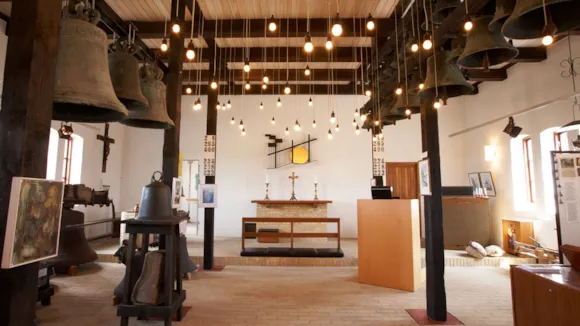
12.26 km
In the Bell Museum you can try out the bells and listen to the story of the Danish bell traditions, and about table bells, animal bells, carillons and bells used on the road. You are allowed to touch the exhibited items, you can take photographs, and there is movement everywhere in the old cog wheels.
Among the upper class you'll find the bell on a table; it is used for making the manor's staff perform their duties, eat their food and assemble when they are to be addressed by their master or the lady of the house. The bell is part of the equipment of a sledge, and it is indispensible to the railway at the crossings. Later it is used on bicycles and trams. The milkman uses a bell to attract customers' attention and so does the lorry that drives around your neighbourhood with ice cream for sale.
The entry ticket also gives access to the School Museum next door, for an extra fee of 30 DKK.
The museum can arrange guided tours for larger ground outside the normal opening hours. Please contact the museum by phone or e-mail.
12.66 km
Geographical garden in Kolding is one of the city's green oases - here is plenty of space to enjoy nature for both children and adults. Discover a world of plants and explore the unique collection of flowers, trees, plants and herbs arranged by their country of origin. You can also go playing at the green area or the playground.
The Geographical Garden is a 14-hectare adventure park and botanical garden in Kolding. The Garden has more than 2000 different trees, shrubs, plants which are sorted into geographical areas.
Get inspiration from The Nature Garden, The Herb Garden, The Organic Kitchen Garden, and many other wonderful areas. The award winning Rose Garden is especially an amazing experience with scents from over 5000
modern roses. In the Rosarium you can explore both historical and wild roses. Exciting and wild nature adventures awaits in “Syvdalen”, with caves, streams and chirping birdsong. If you walk the 1,8 km long “Hjertesti” path, you will experience the rich bird life that gives this place a unique vibe. The garden is a diverse space with room for guests of all ages. The Geographical Garden is often used as a meeting point or as a green oasis. It is especially popular amongst children to visit the playgrounds, The Bamboo Groves, The Caves and The Animal Fold with goats, rabbits, chickens, mountain squirrels and ponies. ”Kolding Miniby” is a whole experience in itself, with a collection of 400 miniature houses illustrating the urban environment that existed in the center of Kolding from 1860 to 1870. All houses are built by retirees who will gladly tell you more about this particular area in the garden. The collection of plants in The Geographical Garden is big, old and extraordinary with special trees, sculptural shrubs and many different perennials and herbs. When visiting the garden as a group, you have the opportunity to book a tour with a high professional level. This is a great way to get around the garden, both for the curious, the botanical nerds and for those who wish to know more about the founder of The Geographical Garden, Aksel Olsen, who was an interesting pioneer with many talents.
The Geographical Garden is wonderful all year round, with something new happening in every season. There is a broad range of events happening throughout the year such as workshops, fitness, installations, tours, talks and many other activities.
Guests are very welcome to bring their own picnic to one of the many picnic tables. Otherwise, the “Café Lykkefund” is open every day in summer, tempting with coffee, tea, baked goods, warm toasts, organic ice cream and cold beverages.
It is also possible to rent some of the cozy spaces of The Geographical Garden such as The Greenhouse or the smaller pavilions for private events like weddings, business meetings or birthdays. For larger groups visiting, we can always help you plan activities in our green surroundings.
16.65 km
Go to Voyens and experience the tale of a village smithy that became a modern industrial story. Learn how a company developed knowhow on all fronts within the fridge-freezer technology. It’s also the tale of how the small station town of Woyens developed into the thriving town of Vojens. Voyens is now in Haderslev Kommune (Haderslev Municipality).
The village of Vojens grew along with the company into a modern provincial town. Without the enterprise of Brødrene Gram, there would still be just fields where the town is located today.
After rumours began to spread that the railway was coming to Southern Jutland, the town was established, and after the railway was built, Vojens could thank the foresight of Hans Gram, who had taken the opportunity to establish his company. During the next 100 years, this workplace employed a large proportion of the population of Vojens.
The manufacturer, Hans Gram, constructed a machine workshop covering 100m2 at Vojens in 1901. He was even able to supply whole dairies. Later on, his brother Aage Gram joined the company, which then became known as Brødrene Gram. Over 100 years, the number of employees grew from just a few to around 3500, and the company gained subsidiaries and dealers all over the whole world.
Opening times:
The museum is only open by arrangement.
Write an email to the staff containing the following information:
- Preferred visiting time.
- Number of participants.
- The email address that the answer should be sent to.
If you want to visit at short notice, please arrange this by telephone.
With group visits you can also order/book:
- Coffee and bread, as well as other refreshments.
- A contribution about the history of Brødrene Gram or the industry.